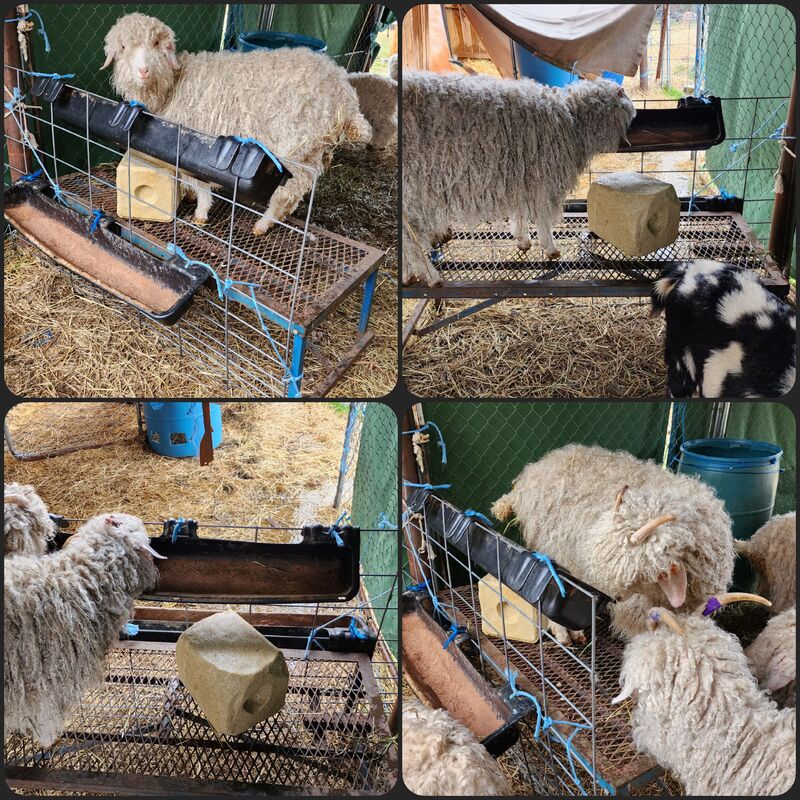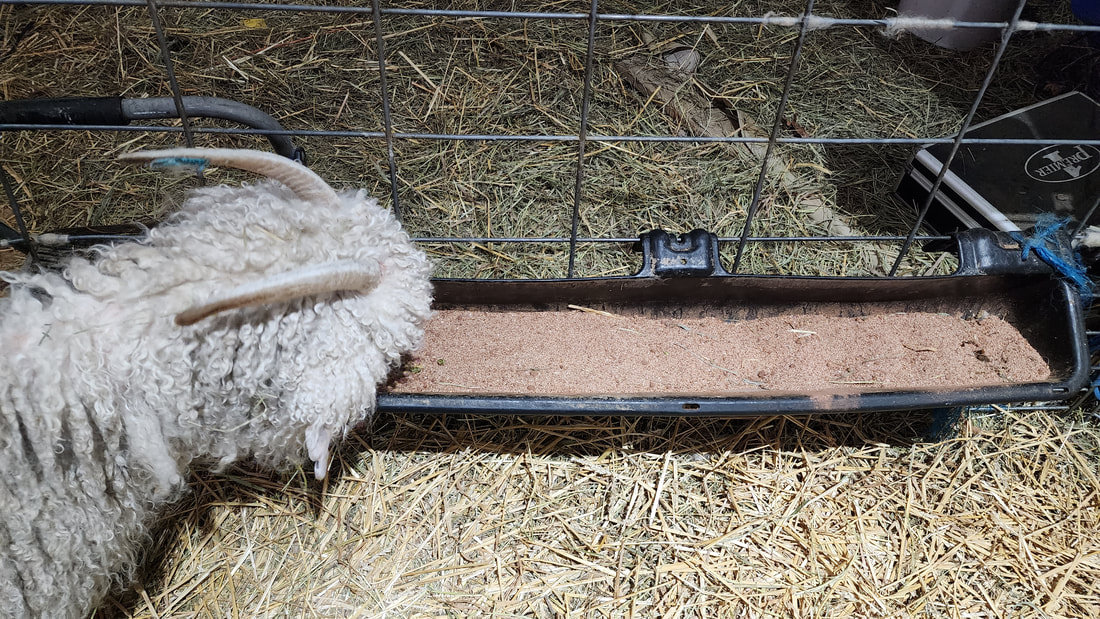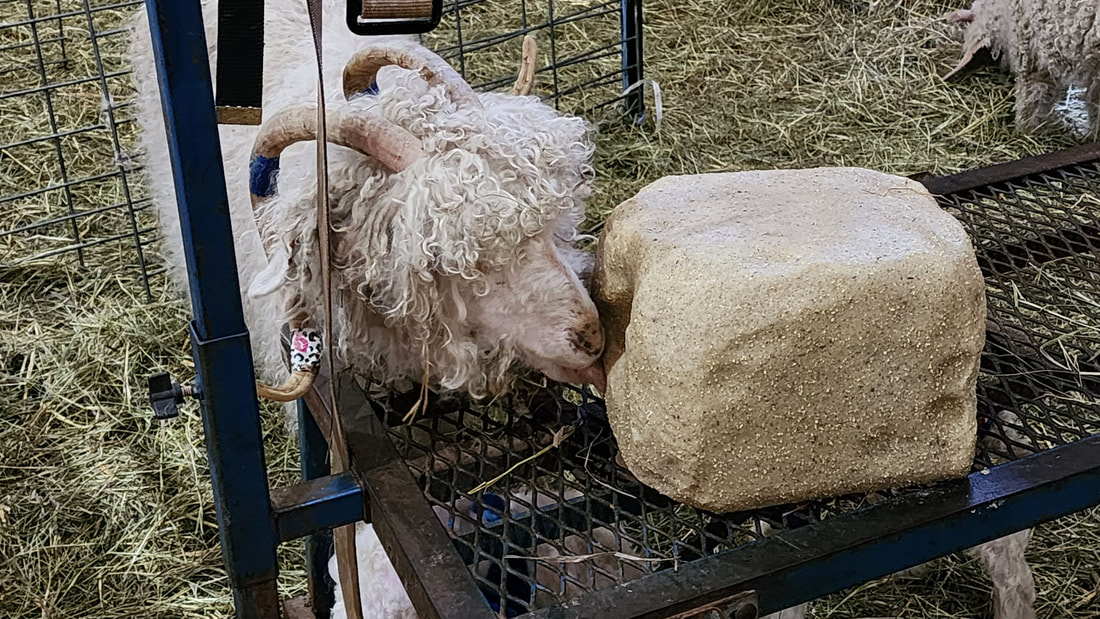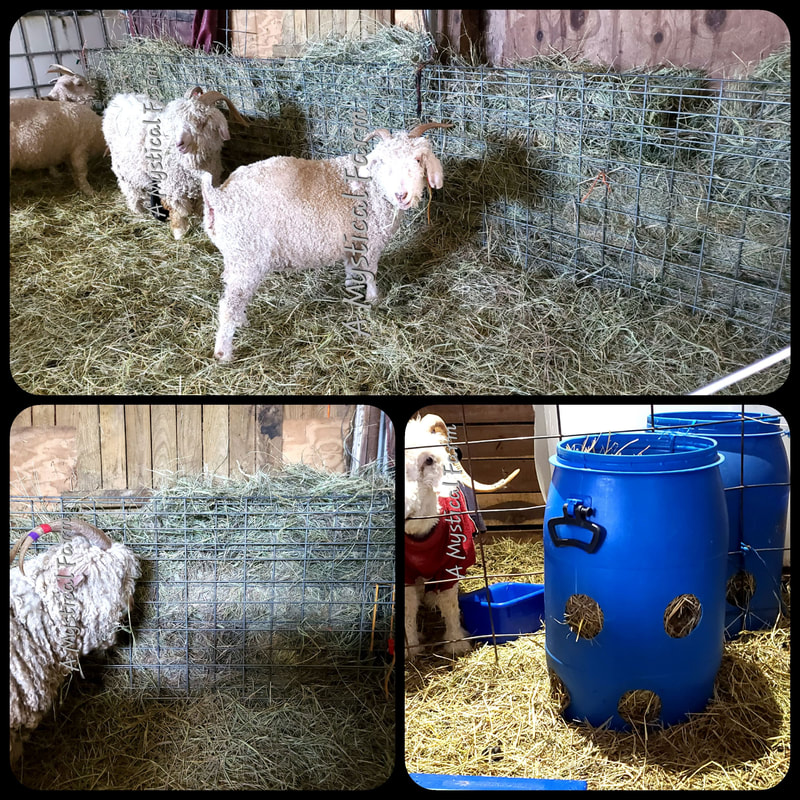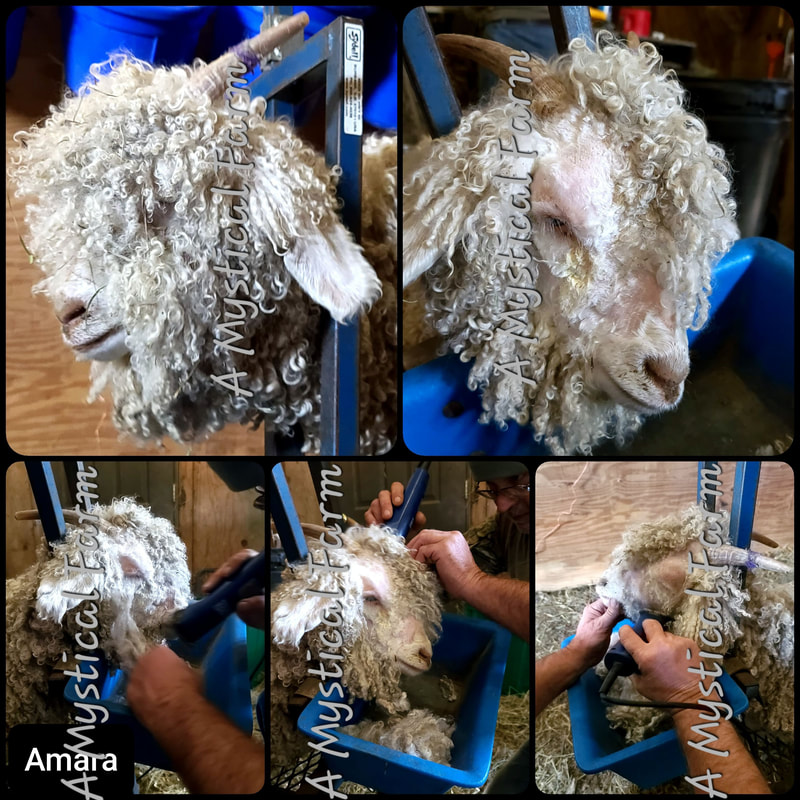While we strive to care for our precious angora goats as naturally as possible, we recognize that they don't receive all of their nutritional requirements from just grazing the pastures. As already mentioned, we supplement their feed with delicious brome hay when appropriate, but we also provide lots of well-balanced and specially formulated minerals all year to help assure our beloved angora goats stay healthy. The long black feeders are kept full and placed throughout the barn as well as at different heights on the stand under cover outside. That stand is very secure to the post that is drilled 4 foot into the ground. Don't worry! They won't be tipping it over! The yellow blocks are actually sulfur blocks and help the goats resist external parastes like ticks. Afterall, we do live in Missouri and ticks are a fact of Nature in this part of the country!
Caring for
Our Precious Angora Goats
We love our precious angora goats dearly and strive to provide excellent care for them. On this page, I'm sharing some of the things we do in caring for our goats. Healthy, happy angora goats produce higher quality fiber and make better, friendlier companions!
From late spring through early fall, the goats enjoy 15 acres of lush pasture. But, as the cooler weather settles in and the pasture becomes less fulfilling, we feed a high-quality brome hay. We put out lots of hay so there isn't crowding and everyone can get their fair share. In the main part of the barn, we utilize double-stacked hog panel to reduce spillage. In the stalls, we use small round barrels with holes. We really like the brome hay because it has a nice protein percentage (usually 12-14%) and the long grass stems aren't as messy in their fleeces as alfalfa.
Through my quality breeding program, my goats produce copious amounts of fine kid-grade mohair. Sometimes, if it isn't well-managed, this could result in "wool-blindness" where the fiber grows over their face and eyes and reduces their ability to see.
This precious girl is Amara. She could still see at this point, but if her fleece on her face had been left unattended, she would have become wool-blind. Wool-blindness can be dangerous. She could have become separated from the herd, or have gotten an eye infection, or any number of things could have gone wrong. So, to prevent harm or injury, we took care of her. We gave Amara a simple trim around the eyes and face. Now she can see just fine! The trimmings are still usable fiber too. And Amara was such a doll on the stand too! She just laid down and patiently waited for us to do what needed to be done. She even gave snuggles when we were finished! 💕 I love this girl! 💕
This precious girl is Amara. She could still see at this point, but if her fleece on her face had been left unattended, she would have become wool-blind. Wool-blindness can be dangerous. She could have become separated from the herd, or have gotten an eye infection, or any number of things could have gone wrong. So, to prevent harm or injury, we took care of her. We gave Amara a simple trim around the eyes and face. Now she can see just fine! The trimmings are still usable fiber too. And Amara was such a doll on the stand too! She just laid down and patiently waited for us to do what needed to be done. She even gave snuggles when we were finished! 💕 I love this girl! 💕
